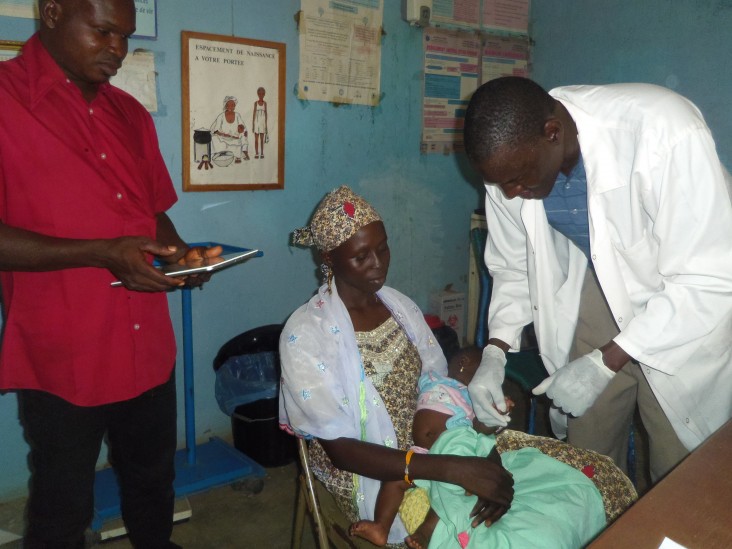Speeches Shim

“The malaria OTSS supervision now allows me to identify malaria symptoms, make a good diagnosis, and give the correct treatment depending on the type of Malaria.” Boubacar Coulibaly,Technial Director,Kotoula health center
In Mali, malaria is the main cause of illness and death, particularly for children less than five years old. Data from the 2016 Malian health information system show that health facilities recorded 2.3 million cases of malaria, representing 32% of all consultations. Among these, 1.6 million were simple cases and 654,193 were severe cases with 1,344 deathsFor this reason, the Malian Ministry of Health continues to prioritize malaria reduction in its national health policy.
In response, USAID/President’s Malaria Initiative, in collaboration with the National Malaria Control Program and the USAID’s High Impact Health Services Project, undertook a process to improve staff performance in the provision of quality health services –particularly for malaria case management—in 36 health districts. This process is known as “Outreach Training and Supportive Supervision,” or OTSS.
OTSS visits help to identify clinical and laboratory services that require strengthening and support to staff working in health facilities. The project ensures that providers are conducting microscopy, rapid diagnostic tests, and cases of fever. Registers are reviewed to collect and verify data on pre-treatment testing, and treatment compliance with national guidelines on positive and negative tests. The project follows up the data recording during these visits through electronic tablets and their sending to a server for analysis. Moreover, observations—clinical, rapid diagnostic tests and laboratory—are scored according to OTSS standards. A score greater than 90% indicates high performance; a score within a range of 75-90% indicates acceptable performance; and a score less than 75% is considered poor/not acceptable performance. During the visit, the personnel directly share observation with the supervised team and corrective measurement is taken.
Fana, a health district located 120 km from Bamako, the capitol of Mali, has 20 community health centers serving more than 300,000 people, including 60,000 children under age five. Between October 2017 and September 2018, eight of these facilities benefited from three OTSS visits each by the district health team. Before OTSS, all eight health facilities had poor performance, earning a score of less than 75% of tested cases. After the first two visits, 100% of the facilities obtained a very good performance score. These health centers improved their performance in detection and treatment of malaria cases among children under five years, increasing their score from 42% to 95% after nine months.
“The malaria OTSS supervision now allows me to identify malaria symptoms, make a good diagnosis, and give the correct treatment depending on the type of Malaria,” explains Boubacar Coulibaly, the technical director of the Kotoula health center in Fana health district.
Confirmed malaria cases treated by artemisin combined therapies among these children under-five increased from 60% to 93% between the first and fourth quarters of 2018. Overall, during the 2018 program year, the project’s OTSS visits reached 36 district referral hospitals and 277 community health centers. The project provided training, orientation or coaching to 920 providers on malaria case management in these facilities. As seen in the Fana health center, these activities lead to improved identification and treatment of malaria in Mali. The High Impact Health Services is a 5-years project of 46 million aiming to reduce or eliminate maternal, newborn, and child deaths in Mali.

Comment
Make a general inquiry or suggest an improvement.